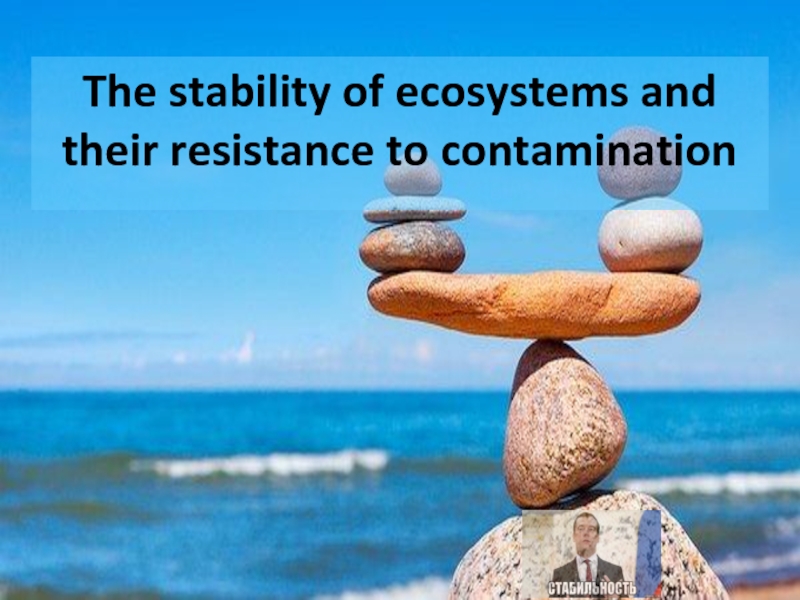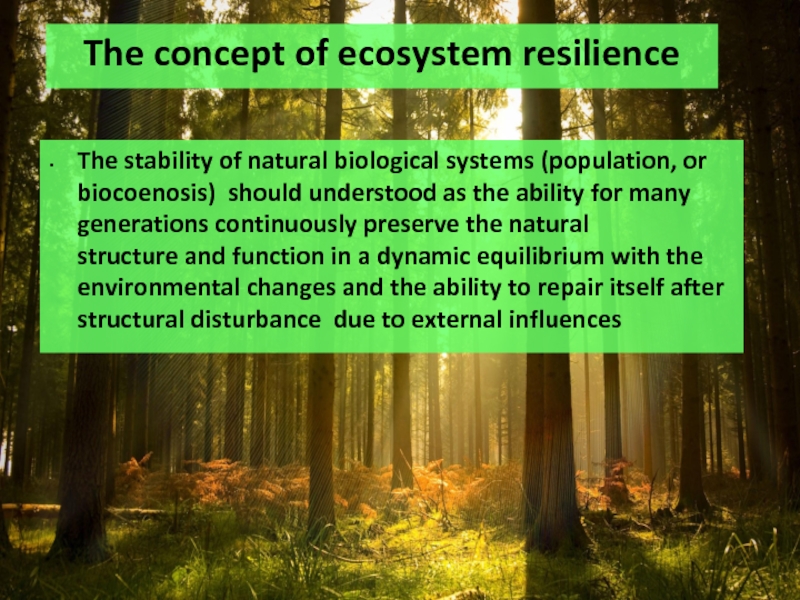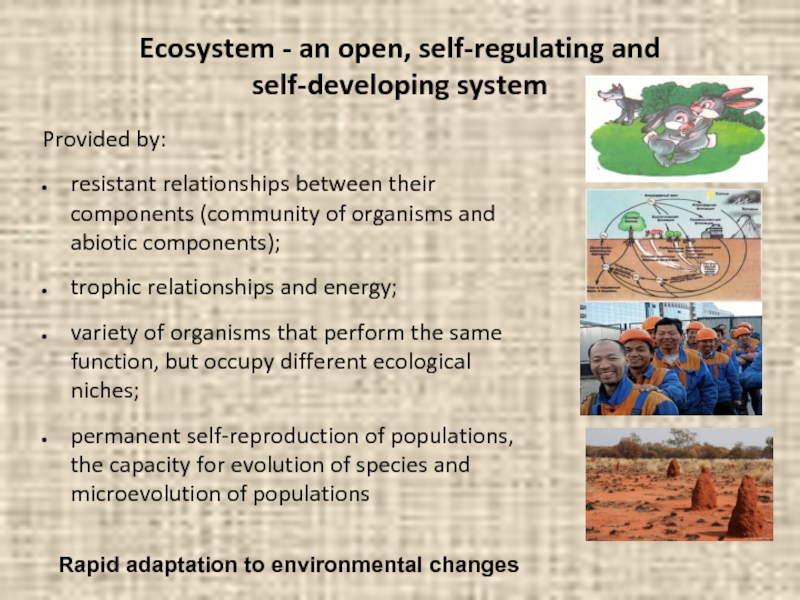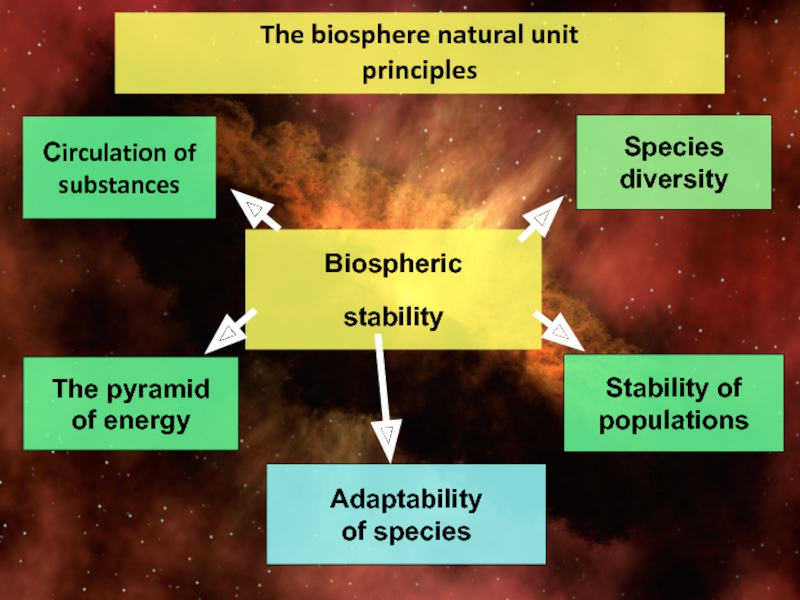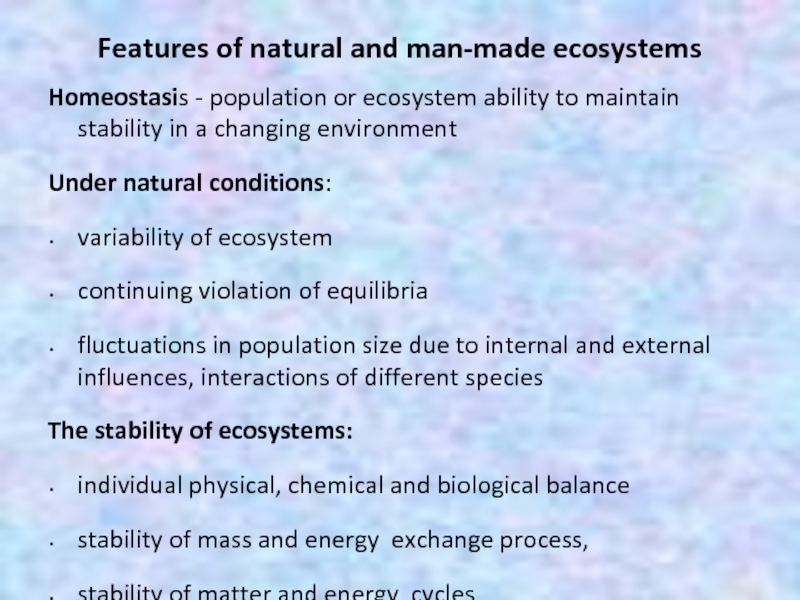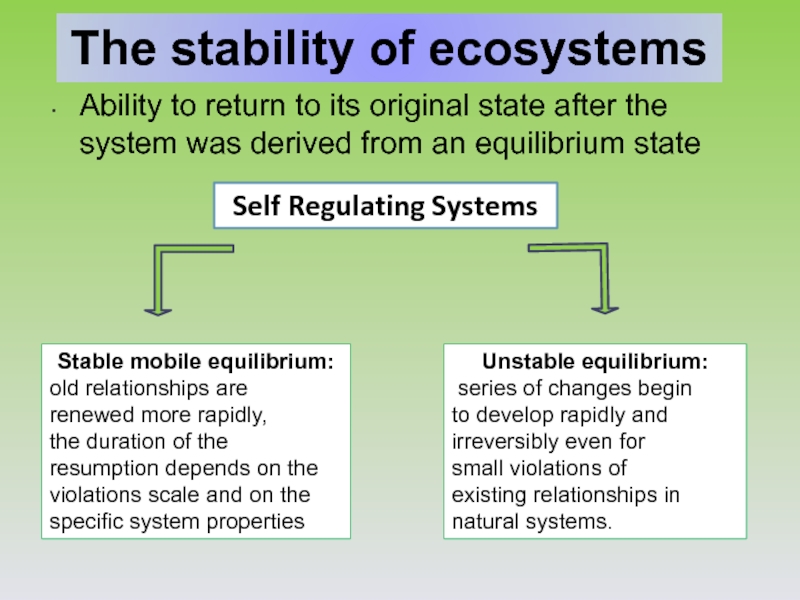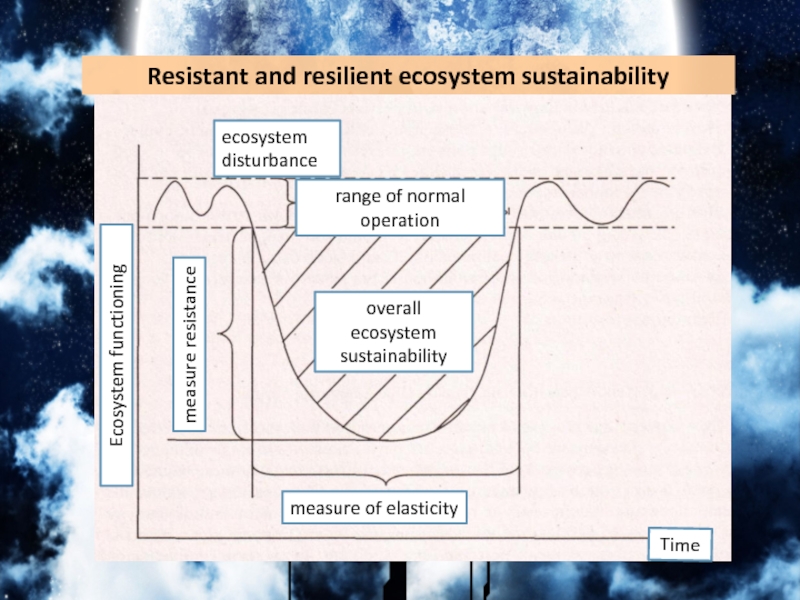- Главная
- Разное
- Дизайн
- Бизнес и предпринимательство
- Аналитика
- Образование
- Развлечения
- Красота и здоровье
- Финансы
- Государство
- Путешествия
- Спорт
- Недвижимость
- Армия
- Графика
- Культурология
- Еда и кулинария
- Лингвистика
- Английский язык
- Астрономия
- Алгебра
- Биология
- География
- Детские презентации
- Информатика
- История
- Литература
- Маркетинг
- Математика
- Медицина
- Менеджмент
- Музыка
- МХК
- Немецкий язык
- ОБЖ
- Обществознание
- Окружающий мир
- Педагогика
- Русский язык
- Технология
- Физика
- Философия
- Химия
- Шаблоны, картинки для презентаций
- Экология
- Экономика
- Юриспруденция
The stability of ecosystems and their resistance to contamination презентация
Содержание
- 1. The stability of ecosystems and their resistance to contamination
- 2. The concept of ecosystem resilience The stability of natural biological systems (population,
- 3. Ecosystem - an open, self-regulating and self-developing
- 4. The biosphere natural unit principles Biospheric
- 5. Features of natural and man-made ecosystems Homeostasis
- 6. The stability of ecosystems Ability to return to its
- 7. Types of stability resistant stability - the ability to remain in
- 8. Resistant and resilient ecosystem sustainability Ecosystem functioning
Слайд 2The concept of ecosystem resilience
The stability of natural biological systems (population, or biocoenosis) should understood as the
Слайд 3Ecosystem - an open, self-regulating and self-developing system
Provided by:
resistant relationships between
trophic relationships and energy;
variety of organisms that perform the same function, but occupy different ecological niches;
permanent self-reproduction of populations, the capacity for evolution of species and microevolution of populations
Rapid adaptation to environmental changes
Слайд 4The biosphere natural unit
principles
Biospheric
stability
Species
diversity
Stability of
populations
Сirculation of
substances
The pyramid
of energy
Adaptability
of
Слайд 5Features of natural and man-made ecosystems
Homeostasis - population or ecosystem ability
Under natural conditions:
variability of ecosystem
continuing violation of equilibria
fluctuations in population size due to internal and external influences, interactions of different species
The stability of ecosystems:
individual physical, chemical and biological balance
stability of mass and energy exchange process,
stability of matter and energy cycles
Слайд 6The stability of ecosystems
Ability to return to its original state after the system was derived from an
Stable mobile equilibrium:
old relationships are renewed more rapidly,
the duration of the resumption depends on the violations scale and on the specific system properties
Unstable equilibrium:
series of changes begin to develop rapidly and irreversibly even for small violations of existing relationships in natural systems.
Self Regulating Systems
Слайд 7Types of stability
resistant stability - the ability to remain in the steady state under the load
elastic resistance - the
Three degrees of ecosystems’ deviation from equilibrium under the external factors:
stress - the composition of biological communities is practically unchanged, the structure is changed significantly, there is a redistribution of species as a function of the dominant degree;
resistant state - is sharply reduced species diversity and the changing composition of the community; resistant to the external factor population develop; this condition is characterized by the biomass stability of the total organisms community;
repression - the complete suppression of the organisms’ development
Слайд 8Resistant and resilient ecosystem sustainability
Ecosystem functioning
ecosystem disturbance
range of normal operation
overall ecosystem
sustainability
measure
measure of elasticity
Time
